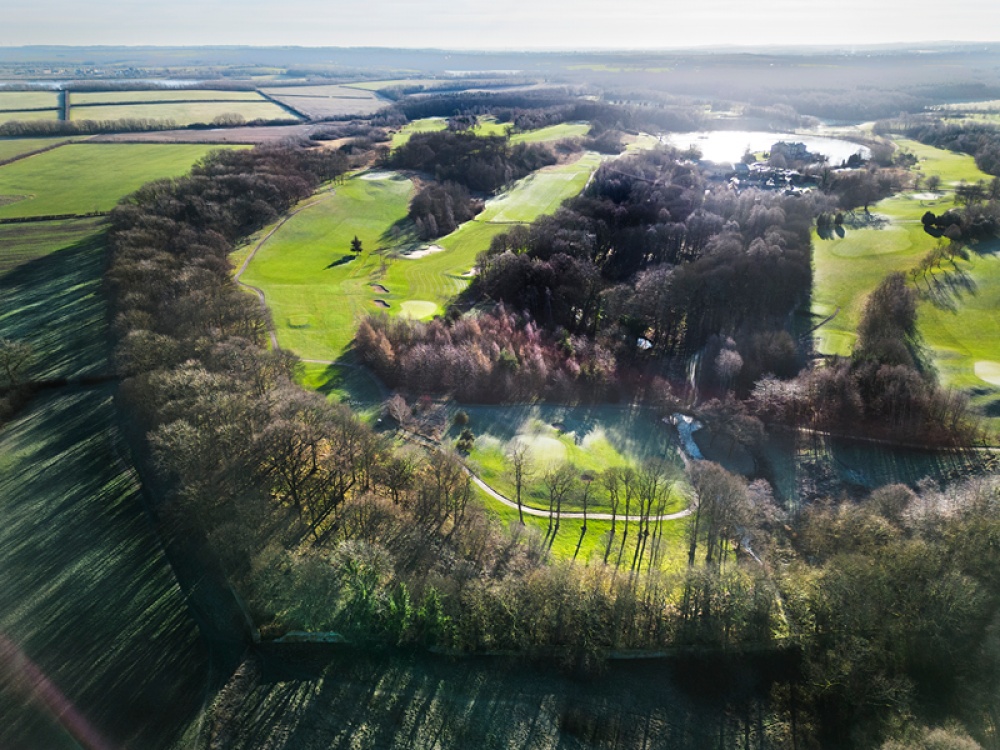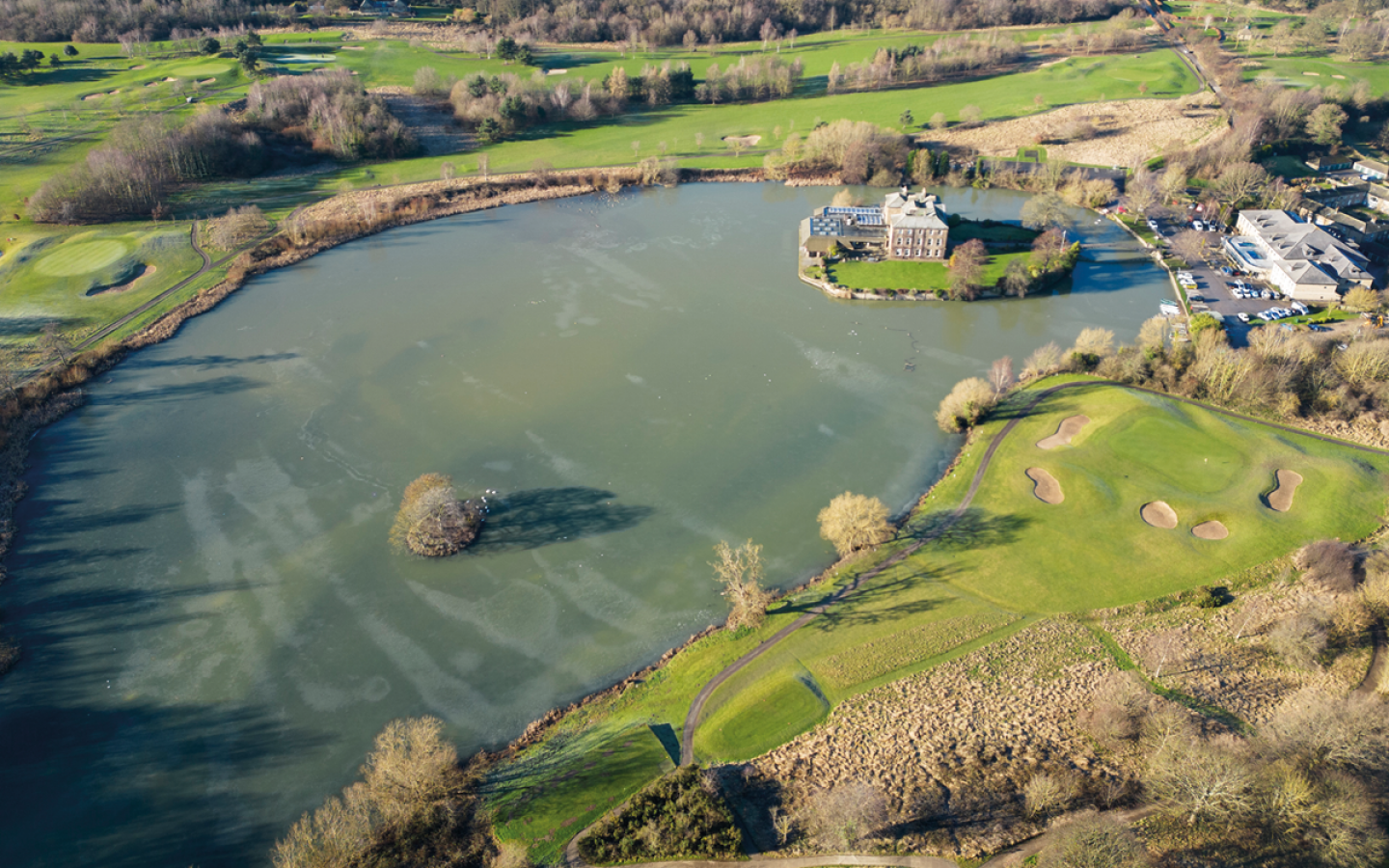Why Yorkshire Has The World's First Nature Reserve

A parkland near Wakefield which is thought to be the world's first nature reserve has now been registered Grade II by Historic England
Waterton Park is a unique ancient site in Yorkshire. ‘The Watertons [a leading noble family] lived there for centuries and they’re mentioned in Shakespeare’s play Richard II,’ says Sarah Charlesworth, Historic England’s Listing Team Leader for Northern England. ‘Charles Waterton came along and altered the landscape to the one that we see today, and that’s now been protected.’
Waterton Park was the first known example of a landscape designed to protect wildlife. At a time when parkland in England was often used for game shooting, Charles transformed the park into a haven for local wildlife. Built on the site of a former moated Medieval hall, Walton Hall (which sits in the park and is now part of Waterton Park Hotel) was built in 1767 on an island within a 26-acre lake. Charles was born at Walton Hall and inherited the property in 1805.
‘Charles was a pioneering naturalist, environmentalist and philanthropist – and an explorer. He went all over South America and made a number of very interesting observations,’ says John Smith, Chair of the Friends of Waterton’s Wall. ‘For example one was curare – a poison extracted from plants that he brought back to this country and was used in anaesthesia until very recently. We’re talking about someone who made a substantial contribution to medical science. He was a pioneering environmentalist and realised on his return from South America that people working in the soap works (predominantly men) looked sick, and he was concerned that the fumes from the factory were having an adverse impact on the environment. He took the owners of the soap works to court to stop them emitting the fumes, and won. He was a philanthropist and William Makepeace Thackeray wrote a wonderful eulogy for Charles Waterton, who I think was viewed as being eccentric, but Makepeace basically said if eccentricity means you’re kind to fellow human beings and respect nature, then maybe that’s a sort of eccentricity we all should share.’
Charles was also a renowned taxidermist who developed a new technique using mercuric chloride as a preservative, which he taught to the influential John Edmonstone whilst in Guyana, who in turn taught the technique to Charles Darwin.

‘He was a really pioneering naturalist, adventurer and scientist and held unusual beliefs for that time – progressive beliefs that we take for granted as modern concepts today,’ says Sarah. ‘He was big on fighting pollution, he was big on seeing a balance of harmony between wildlife and humans, and he really wanted to protect native wildlife, and in particular he had a love of birds. Once he’d inherited the estate he set about creating what became this nature reserve.’
To avoid the disturbance of native wildlife Charles prevented neighbouring keepers and their dogs from entering during nesting season, banned fishing in the lake between late autumn and early May, and forbade shooting. He also created new habitats. Then in 1821 he built a stone boundary wall (which took five years to complete and has been recently listed at Grade II). ‘It was three miles long and varying in height at a level at which a fox cannot jump, and he realised that inside this boundary wall was actually a great place for birdlife and other wildlife to remain protected from foxes, other predators and human beings. Although poachers never really went away,’ says John. ‘It became established as the first nature park or nature reserve in the world.’ One winter Charles recorded 5,000 wildfowl sheltering on his lake, and over the years he noted 123 bird species in the park.
‘Charles opened up the reserve for local people to visit,’ says Sarah. ‘He also let patients from the mental health asylum nearby come for wellbeing visits. This is really progressive stuff because this is the early 1820s. He’s really ahead of his time and just a fascinating character.’
The Friends of Waterton’s Wall was established to preserve a section of the wall, which will celebrate its 200th anniversary in 2026. ‘Some of it is in great disrepair due to weathering, the effect of felled trees and some vandalism,’ says John, ‘but it’s important historically. People have talked about how Charles Waterton was so ahead of his time and the BBC aired a superb programme on Charles Waterton by David Attenborough. The wall is important. It’s just a few minutes from where I live and we often walk in the area because it’s so beautiful, so I thought “we’ve got to do something”.
‘To preserve three miles would be a step too far and the cost would be astronomical, so we thought if we start doing it bit by bit, it’s manageable. A lot of work has been done, including ecological surveys, and we’re hoping to start having some lime mortar workshops to preserve sections of wall in June, in support of Historic England. As a charity our objectives have two main strands. One is to preserve sections of the wall and the second is to educate people locally and nationally about the wall and about Charles Waterton. Many visitors walk around this area on a public footpath but a lot don’t know about Charles despite him being so significant in his day.’
Charles Waterton's pioneering approach to conservation was influential worldwide and Waterton Lakes National Park in Canada, now part of a UNESCO World Heritage Site, is named after him. He passed away at the Hall on 25th May 1865 and his grave at Waterton Park is also Grade II listed. ‘We [Historic England] have protected this landscape primarily because of this historic interest,’ says Sarah. ‘In his day he was a well-known figure because of his scientific research, but as time has progressed he’s become less well known so for anyone outside of the sphere of ecology, they don’t recognise the name. It’s good to get this history and story out there and to share it with everyone.

‘The wall is now listed and has statutory protection, which means there’s a duty of care to upkeep it. Landscapes are slightly different in terms of their national protection but it means that, if any proposed development were to come along in the future, the significance of the landscape is taken into consideration and any proposals don’t harm that significance. It’s about respecting the character of both the wall and the landscape. The protection really is about highlighting its national significance, it’s the recognition of this site as being nationally important. Overall it’s a really fascinating place.’
Historic England’s Missing Pieces Project is now encouraging members of the public to share their own stories about Waterton Park. ‘Everything that is protected is put on the National Heritage List for England. We’ve introduced this Missing Pieces Project which enables anyone to add further information to a particular list entry,’ explains Sarah. ‘Say if you live next door to a building that you find really interesting, or you know of a site down the road or that you visited on holiday, if you have photographs or a family connection for example they can be uploaded to the website so everyone else can see. It’s a really good form of engagement to get everyone involved. We don’t just want a dry document. The more info we have the better. We’ve had schools submit some of their project work, you can also submit archival material, and we would encourage people to use it and go out into their local area to take photos and add them to the list. It really brings these buildings and sites to life.’







